Understanding Opioid Addiction

All drugs are classified under varying schedules depending on whether the drug is cleared for medical use, has a high risk of misuse, poses a public health risk, is similar to another controlled substance or is likely to cause physical or psychological dependence in the user. This scheduling operates as an initial indicator to people – including doctors, psychologists and even patients – just what kind of substance they’re prescribing and/or taking.
Obviously, opioids and opiates fall into different schedules, from Schedule I to Schedule V depending on their severity and likelihood for abuse. Even though all opioids come with risks, some are more dangerous and threaten overdose more than others. For example, the Controlled Substance Act classifies heroin as a Schedule I drug because “It has a high potential for abuse, no currently accepted medical use in treatment in the United States, and a lack of accepted safety for use under medical supervision.”
Oxycodone, however, receives classification as a Schedule II drug because, even though there remains a high risk of abuse and developing a dependence, this substance can be medically prescribed (with strong restrictions, of course).
But what exactly makes opioids so addictive? What about the way they work in the body and brain cause them to be so threatening and, in many cases, fatal?
Opioids as addictive substances
According to the CDC’s online database WONDER, approximately 500,000 people from 1999-2019 have died from an overdose involving opioids, both prescription and illicit.
This heartbreaking statistic is a reminder of the genuine threat opioids pose to human health. On a grand scale, they affect hundreds of thousands of lives, but on a much smaller scale, they threaten both the physical and mental health of the individual.
See, opioids work by binding to opioid receptors in the body – your body has many opioid receptors in the brain, spinal cord and other areas because it’s the body’s natural way of reducing pain, obviously to a much lower extent than synthetic chemicals.
When the synthetic opioid drug binds to these receptors, the drug blocks signals of pain from being received and sent throughout the body. Additionally, the drug relaxes the user, creates a feeling of euphoria and releases large amounts of dopamine, which gives a huge dose of pleasure to the brain’s natural reward system, meaning your body reads the drug and the drug’s effects as a positive thing. This release of dopamine subconsciously causes the brain to desire more and more of the drug over time.
This feeling of pleasure combined with the reduction of pain can be addictive both psychologically, as human nature seeks to avoid pain, but also physically, as the brain begins to rewire itself and ceases to produce dopamine on its own.
Who is at risk for developing an opioid addiction?
It is not uncommon for opioid addiction to have its beginnings as a prescription medication used to reduce pain following surgery or an injury. However, using strong opioid medication for more than five days puts an individual at an even higher risk of developing an addiction.
Other factors that could predispose an individual to an opioid addiction include:
- Taking the medication in a way other than prescribed (i.e. crushing a pill in order to snort or inject it)
- Taking the dose more frequently or in higher quantities than prescribed
- Using opioids for long periods of time
- The type of opioid being used
- Family or personal history of substance abuse
- Frequent contact with high-risk individuals or environments
- History of legal problems or criminal activity
- Pre-existing mental health condition
- Whether the drug was mixed with other substances
- The individual’s height, weight and age
While these signs may not indicate an active or forming opioid addiction, it is always better to be aware of the possibility and proceed with extreme caution when utilizing opioid prescription medication. Always adhere to the advice of your doctor or medical professional, and talk with them about your concerns and alternative options if you prefer to avoid opioids altogether.
Help for opioid addiction
Opioids by their nature and the way they interact with the human body already present a number of risks. The possibility of addiction never goes away no matter how careful a patient is. As the body builds a tolerance and slowly becomes dependent on opioids to control and minimize pain, it becomes increasingly difficult to fight against the urges and cravings of the drug.
However, whether an individual has been battling opioid addiction for years or is recently made aware of the odds in their own life, help is always available. Life without the bonds of opioid addiction offers enormous possibilities, opportunities and freedoms, and such a life can be yours. No matter how long or how brief the dependence or addiction has been happening, through detox and addiction treatment, healing and complete recovery is more than possible.
To reach out to an addiction treatment center and receive caring and professional help today, call Pyramid Healthcare at 301-997-1300.
All drugs are classified under varying schedules depending on whether the drug is cleared for medical use, has a high risk of misuse, poses a public health risk, is similar to another controlled substance or is likely to cause physical or psychological dependence in the user. This scheduling operates as an initial indicator to people – including doctors, psychologists and even patients – just what kind of substance they’re prescribing and/or taking.
Obviously, opioids and opiates fall into different schedules, from Schedule I to Schedule V depending on their severity and likelihood for abuse. Even though all opioids come with risks, some are more dangerous and threaten overdose more than others. For example, the Controlled Substance Act classifies heroin as a Schedule I drug because “It has a high potential for abuse, no currently accepted medical use in treatment in the United States, and a lack of accepted safety for use under medical supervision.”
Oxycodone, however, receives classification as a Schedule II drug because, even though there remains a high risk of abuse and developing a dependence, this substance can be medically prescribed (with strong restrictions, of course).
But what exactly makes opioids so addictive? What about the way they work in the body and brain cause them to be so threatening and, in many cases, fatal?
Opioids as addictive substances
According to the CDC’s online database WONDER, approximately 500,000 people from 1999-2019 have died from an overdose involving opioids, both prescription and illicit.
This heartbreaking statistic is a reminder of the genuine threat opioids pose to human health. On a grand scale, they affect hundreds of thousands of lives, but on a much smaller scale, they threaten both the physical and mental health of the individual.
See, opioids work by binding to opioid receptors in the body – your body has many opioid receptors in the brain, spinal cord and other areas because it’s the body’s natural way of reducing pain, obviously to a much lower extent than synthetic chemicals.
When the synthetic opioid drug binds to these receptors, the drug blocks signals of pain from being received and sent throughout the body. Additionally, the drug relaxes the user, creates a feeling of euphoria and releases large amounts of dopamine, which gives a huge dose of pleasure to the brain’s natural reward system, meaning your body reads the drug and the drug’s effects as a positive thing. This release of dopamine subconsciously causes the brain to desire more and more of the drug over time.
This feeling of pleasure combined with the reduction of pain can be addictive both psychologically, as human nature seeks to avoid pain, but also physically, as the brain begins to rewire itself and ceases to produce dopamine on its own.
Who is at risk for developing an opioid addiction?
It is not uncommon for opioid addiction to have its beginnings as a prescription medication used to reduce pain following surgery or an injury. However, using strong opioid medication for more than five days puts an individual at an even higher risk of developing an addiction.
Other factors that could predispose an individual to an opioid addiction include:
- Taking the medication in a way other than prescribed (i.e. crushing a pill in order to snort or inject it)
- Taking the dose more frequently or in higher quantities than prescribed
- Using opioids for long periods of time
- The type of opioid being used
- Family or personal history of substance abuse
- Frequent contact with high-risk individuals or environments
- History of legal problems or criminal activity
- Pre-existing mental health condition
- Whether the drug was mixed with other substances
- The individual’s height, weight and age
While these signs may not indicate an active or forming opioid addiction, it is always better to be aware of the possibility and proceed with extreme caution when utilizing opioid prescription medication. Always adhere to the advice of your doctor or medical professional, and talk with them about your concerns and alternative options if you prefer to avoid opioids altogether.
Help for opioid addiction
Opioids by their nature and the way they interact with the human body already present a number of risks. The possibility of addiction never goes away no matter how careful a patient is. As the body builds a tolerance and slowly becomes dependent on opioids to control and minimize pain, it becomes increasingly difficult to fight against the urges and cravings of the drug.
However, whether an individual has been battling opioid addiction for years or is recently made aware of the odds in their own life, help is always available. Life without the bonds of opioid addiction offers enormous possibilities, opportunities and freedoms, and such a life can be yours. No matter how long or how brief the dependence or addiction has been happening, through detox and addiction treatment, healing and complete recovery is more than possible.
To reach out to an addiction treatment center and receive caring and professional help today, call Pyramid Healthcare at 301-997-1300.






